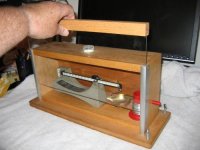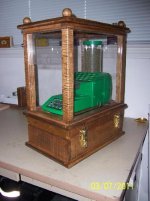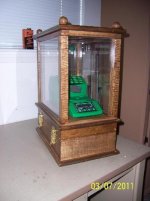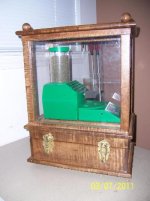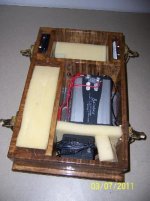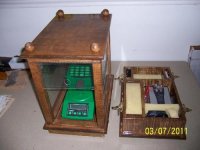German,
Some years ago, I came up with the idea for what you see in the photograph. At the time, I didn't have a place to do wood work, but I was lucky enough to have a friend, and fellow shooter who did. His name is Ed Hellam. Anyway, Ed built us both what I call scale wind boxes. Since then, a couple of other friends have made them for their own use. As you may be able to see, the box has leveling feet. It may be hard to see from the angle that the picture was taken, but there is a bulls eye level mounted on the top. The sliding glass front cover is pretty evident. The wood piece, that I am gripping helps form the wind seal. coming into contact with the top of the box, as the bottom of the glass comes to rest on the bottom piece. The key feature of all the variations, is that the charge can be trickled to final weight with the cover closed. On my version, this is accomplished by having the trickler inside,with its handle extending through a fitted hole in the side of the box, so that it may be turned with the cover closed.
Shortly after the box was built, I toyed with the idea of submitting an article about it to Precision Shooting. My rough draft was titled "The Missing Link" since this box is the only additional piece of equipment that the typical reloader would need to load outdoors, at the range, (a practice that I find allows much more rapid load development, than the more typical cycle of loading at home and testing at the range). As it turns out, the scale box has mostly been used to help friends develop loads for new hunting rifles, using powders that are too coarse to throw. Generally, we have been able to come up with loads in one day at the range, if the rifle was properly prepared (correct bedding).
Boyd


